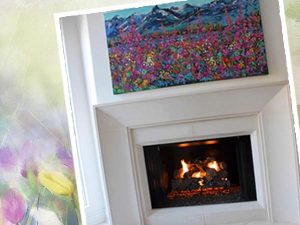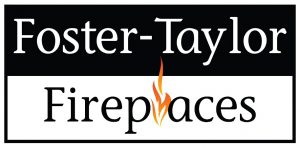Outdoor fireplaces and fire pits transform patios, decks, or backyards into cozy, inviting spaces, allowing you to enjoy the warmth and ambiance of a fire. As the weather cools, there’s nothing like the crackle of flames to create a relaxing atmosphere that feels like a vacation in your own backyard. If you’re considering an outdoor fireplace, it’s essential to understand some key factors that will help you choose the best setup for your needs. Here’s everything you need to know before making a decision.
1. Choosing Between Gas, Wood, and Electric Fireplaces
One of the first decisions to make when selecting an outdoor fireplace is whether you prefer gas, wood, or electric. Each has its pros and cons, so it’s worth considering your lifestyle, maintenance preferences, and local regulations.
Wood-burning fireplaces offer a traditional feel with the smell of burning wood, the natural crackle of logs, and a rustic ambiance. However, they produce smoke, which requires proper ventilation and adherence to local fire regulations. Wood fireplaces also require ash removal and regular chimney cleaning.
Gas and electric fireplaces offer a cleaner alternative with little to no emissions. They produce less mess, require minimal maintenance, and provide consistent heat. Gas fireplaces need a gas line, while electric fireplaces require a nearby outlet. Both offer easy on-off functionality and are ideal for homeowners seeking a more convenient heating option.
If you’re looking for an innovative option, smokeless fire pits are gaining popularity. These models are designed to reburn the smoke, creating a more pleasant experience. They eliminate the need to move seats to avoid smoke trails, making for a more comfortable gathering.
2. Finding the Ideal Location and Space
Where you place your outdoor fireplace is as crucial as the type you select. Consider the space you have, how it aligns with seating arrangements, and proximity to the house.
- Seating and Placement: Choose a location that complements your outdoor seating area, allowing for easy access and a pleasant view. You might want the fireplace closer to the house for convenience or further away to reduce noise from gatherings.
- Safety Regulations: Check local fire safety regulations regarding the placement of outdoor fireplaces. Restrictions may include the required distance from structures, fences, or trees. For wood-burning fireplaces, ensure proper ventilation, install spark screens, and use fire-resistant bases such as concrete or pavers.
- Weather Protection: Electric fireplaces must be shielded from rain and snow, so install them under a covered patio or use a weatherproof cover when not in use.
3. Maintenance and Upkeep
Different types of fireplaces have different maintenance requirements, so consider how much time you’re willing to spend on upkeep.
- Wood-burning fireplaces require regular ash removal, chimney cleaning to prevent creosote buildup, and inspection for chimney cracks. Use a spark screen to contain sparks and embers.
- Gas fireplaces need annual inspection of the gas line to check for leaks, as well as cleaning of burners, artificial logs, and glass. Keeping the unit covered during the off-season can protect it from weather damage.
- Electric fireplaces require less maintenance but still need to be checked for debris and inspected for heating element functionality. Before each season, turn on the heating element to ensure it’s working properly.
4. Fire Safety Tips
Safety should always be a top priority when installing and using outdoor fireplaces. Keep these safety guidelines in mind:
- Clear Flammable Materials: Keep a safe distance between the fireplace and any flammable materials, such as outdoor furniture, plants, or dry grass. Consider using fireproof mats or surfaces nearby.
- Keep a Fire Extinguisher Handy: Always have a fire extinguisher nearby, and make sure it’s the right type for the fireplace you’re using (Class A for wood, Class B for gas). Check the extinguisher annually to ensure it’s in working condition.
- Proper Wood Storage: Store wood in a dry area to prevent mold, rot, and excess smoke. Use only seasoned, dry wood to minimize soot and smoke production.
- Seasonal Inspection: Before the start of each season, perform a thorough inspection to ensure the fireplace, chimney, and other components are in good working condition.
Creating Your Outdoor Oasis
With various styles, placement options, and safety measures in mind, you’re well on your way to selecting the perfect outdoor fireplace. Whether it’s a cozy fire pit or a grand outdoor hearth, you’ll soon be able to enjoy the warmth and ambiance of a fire in your own backyard. So, take the next steps in creating an outdoor oasis where you can relax, entertain, and make lasting memories.

